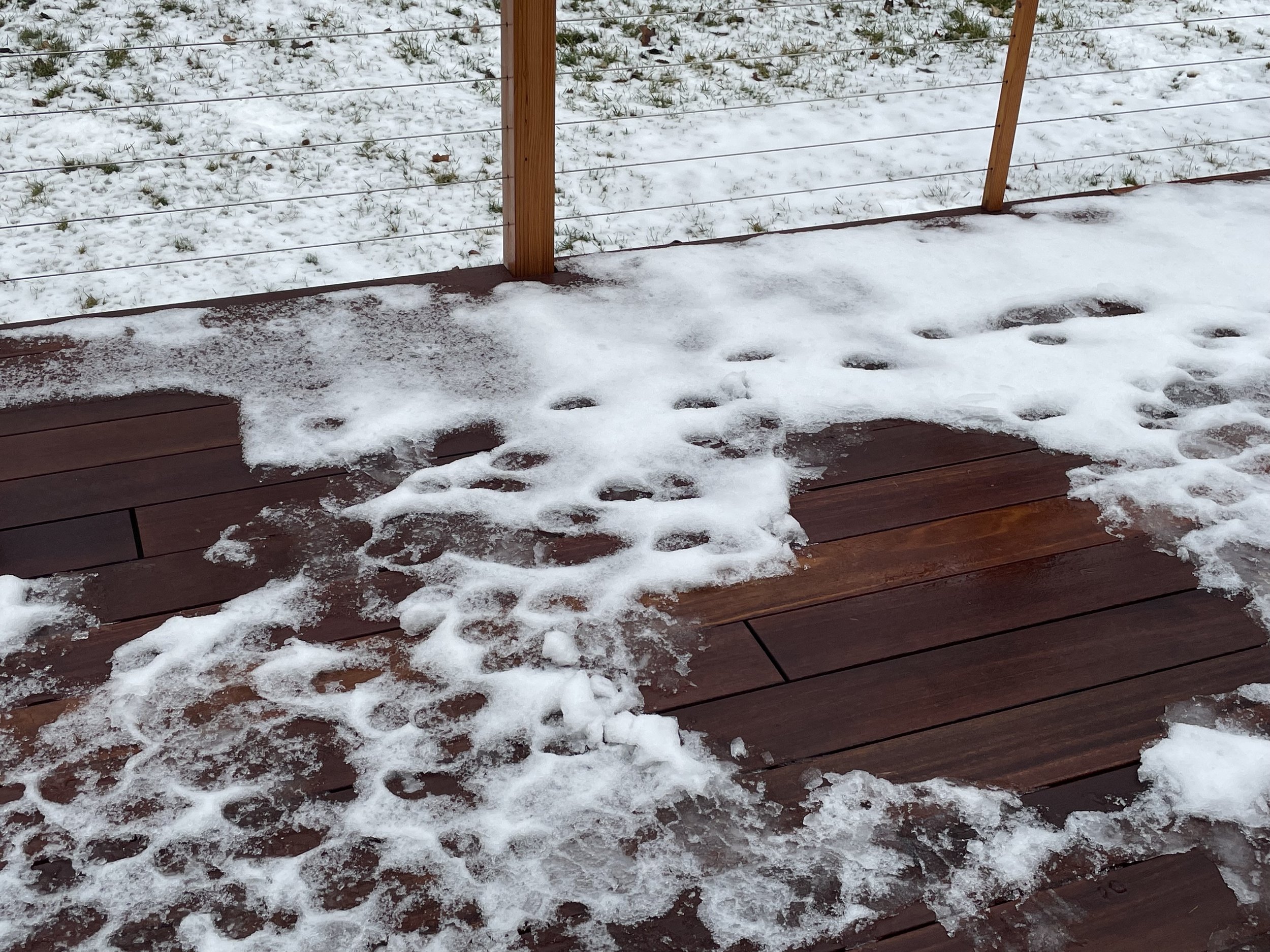My Two Writing Teachers colleagues and I are hosting the 16th Annual March Slice of Life Story Challenge, in which teachers from around the world participate by posting a story per day.
This year, the SOLSC gives me a chance to record memories of our little dog, Indie, who died in January. I want to write these down while they are still fresh, so that my family and I can read them later and remember not only Indie, but little slices of life across the years.
“I could not give away the rest of his shoes. I stood there for a moment, then realized why: he would need shoes if he was to return. The recognition of this thought by no means eradicated the thought. I have still not tried to determine (say, by giving away the shoes) if the thought has lost its power.”
“We do not expect to be literally crazy, cool customers who believe their husband is about to return and need his shoes.”
Joan Didion, describing her grief after her husband passed away in The Year of Magical Thinking
The story of losing my dog is, of course, not really a story about losing my dog.
I’ve spent every day looking for small signs of him. Traces of his fur that the vacuum might have missed, a dent in a pillow perhaps, footprints in the snow.
A few days ago, I went for a cross-country ski in the park where I usually go. A few weeks earlier, I had added myself and Indie to a small snowman family on a stone wall in the woods. I wanted to check on the family to see if they were still there. If the snowman family were there, it meant… I don’t know… something?
I stopped to visit the melted remains of the snowmen, and I stared at the barbed wire fence just behind the stone wall where they sat. I looked up and noticed the mountain, still covered in snow, even in March. I looked up further and took in the bluebird sky, shining and beautiful, just like the day Indie died.
I stayed for a minute and then I kept going.
The snow sparkled as I skied around and around through the trees. I listened to music as I moved along. There was a song on the playlist that I had listened to the night Indie died and I did not want it to play while I was still moving. I’ve listened to it exactly twice since the night he died. Both times were on bluebird sky days, while I was alone in snow-covered woods.
Oh we learn
Life is short… love is tall
Hands and heart
Learn how to hold it all
Life is short… love is tall
Hands and heart
Learn how to hold it all
I got the idea that if I could get back to the snowmen just at the time the song came on, it would somehow… mean something. Like Indie was visiting me. Or not exactly Indie, but some sort of “magic.”
I got closer to the stone wall and the snowmen. The current song (‘A Road to Nowhere’ by Talking Heads) neared its end. I pushed myself to be at the snowmen in case the “magic” song were to come on. I raced faster and faster, a little bit clumsy, tripping over myself a bit. I could see the snowmen by the time ‘A Road to Nowhere’ was wrapping up, and breathlessly I sat on the bench and waited.
A different song came on. A little disappointed, I sat and listened anyway. It was ‘Starting Over’ by Chris Stapleton, a beautiful song with its own kind of magic.
On the way out, I decided to ski through the dog off-leash area, the one Indie never got to go to. I looked for pawprints that might look just like his. I searched and there were a zillion small paw prints. But none were exactly like his.






